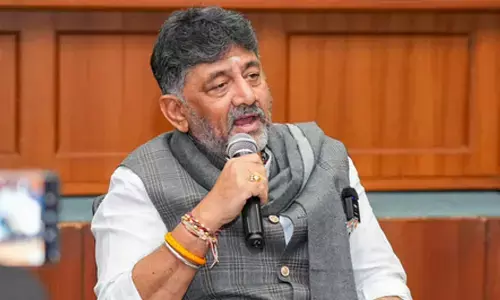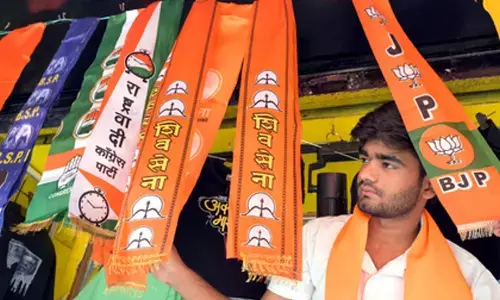Public response to private woes

Public Response To Private Woes, Padmaja Shaw, Story of A Tribal Girl. This is the story of a tribal girl. She is the youngest daughter in a family of five daughters and two brothers. Among the sisters, four are married, without getting much education.
This is the story of a tribal girl. She is the youngest daughter in a family of five daughters and two brothers. Among the sisters, four are married, without getting much education. The family considers the youngest one quite bright. She completed her graduation and has moved to Hyderabad to study for a degree in education, which would qualify her for a job in any of the many vacant posts in state-run schools.
She is the source of great pride to her family as she is the first woman to access post-graduate education, and aspire to professional employment. She comes to the city of Hyderabad and begins her new life in the city from accommodation shared with a few other girls who have also come from the districts to the city to study. Some three months later, she completes her examinations and is planning to go home for a few days.
She suddenly disappears from the room; her handbag, other personal things still in the room, a few things scattered on the floor. Her brother, also a PG student staying on a university campus in the city, comes to pick her up and finds her missing. He searches everywhere and finally files a complaint with the local police station on 13 November, 2013.
He waits for a couple of days, meanwhile, tries to find any useful information about his sister’s whereabouts, passes on whatever he finds out to the police. He gives written complaints to the State Human Rights Commission, the Commissioner of Police, meets very senior politicians, prints posters with his sister’s photograph and his phone number and puts it up in public places in his district and the city.
He also appeals to women’s activists; appeals to some political groups; all try to give moral support, but are unable to give momentum in any way to take it up as a campaign. He alsoappears on some popular television channels to make the issue a more public one. After a delay of nearly a month, other than going from pillar to post, the brother is completely helpless.
There is still no trace of the missing girl. There is no sign of either administrative support from the state agencies or from civil society groups in this case. It is not clear if all the agencies are preoccupied with the dramatic political developments in the state. Both the brother and sister are new comers to the city and have no social capital they can cash-in on.
The missing girl hails from a tribal family. Khammam district, where she hails from has the highest percentage (26.4%) of ST population. The population of Scheduled Tribes is around 7% in the entire Andhra Pradesh state. There are 35 reported tribal communities in the state. Sugalis are numerically the largest in number making up some 41.4% of the state’s ST population.
According to the Office of the Registrar General of India 2001, a miniscule 1.8 % of all STs attain educational level of graduation and above, while some 42% remain below primary level and 0.6% attain technical and non-technical diplomas. The story of gross under-recruitment of STs in all public and private sector jobs is also familiar.
The tribal communities are in this dismal state of affairs since pre-Independence days. A young woman from one of the tribal communities (of the 1.8%) with great dreams of making it in the mainstream arrives in the city to study and she disappears without a trace. Nationally, the very existence and safety of all women is under serious threat from all kinds of sources – families, bosses, security establishment and random strangers out on a hunt.
The increasing threat to women’s safety is played up on media frequently, but that seems to have little impact on the larger society and its response to women’s safety. There is also an argument that community, class and caste of the victims matters in getting space in public discourse.
But the concern is, how many cases need to be debated on the media before the system begins to respond promptly and before the larger society become alert to the dangers women face in every day life? Can there be bigger and brutal cases than the Nirbhaya case? Can there be more high profile cases than the Tejpal and Ganguly sexual harassment cases? Such cases also raise questions of which cases deserve public response.
How does one mobilise public opinion preventively, instead of in response to a gruesome crime that can achieve little other than to bay for the hanging of the criminals? Interactions with some of the activist groups were also revealing. The new trend in cases involving sexual harassment of women in institutions it appears is, the male dominated student groups actively discourage women’s groups from pursuing cases so that ‘bright’ careers are not undermined.
Leniency and looking the other way are advocated, and counselling is preferred. Women’s organizations are themselves going through a phase of fatigue where it is becoming increasingly difficult to mobilise women to participate in public protest for such causes, if they are not sufficiently dramatic or involve big names. Cases such as the missing girl are complex. No one is really sure of what has happened. Only trained investigative minds can pursue and crack such cases.
The police often assume in such cases that the girl has probably left voluntarily and will probably return if given time. When clues point to her leaving by force, if this attitude is taken, it obviously gives time to the criminals to execute their plans. Delay also cools off whatever trails that may be there for tracing the missing person in a short time.
Are there any rules that prevent the police from using sniffer dogs and other tracking devices to investigate in such cases? Why should a missing person report, especially of a young woman, be treated with less seriousness than say a murder or grand larceny? Are there standard protocols for dealing with such cases or is serious action taken only in some cases and the others left to solve themselves? Why does an individual who approaches the police even have to seek the help of so many other agencies (without much result)? Why is there no progress at all in a case that is almost a month old? One only hopes that the lack of public response, and the lack of response from the state agencies do not send a negative message to the missing girl’s community.
One hopes her disappearance does not scare parents into confining other bright girls to the safety of their own communities. This is not just their private woe. It is a public cause of safety for women. We need to respond with outrage and shame ourselves into providing a safer society for women.
Next Story














